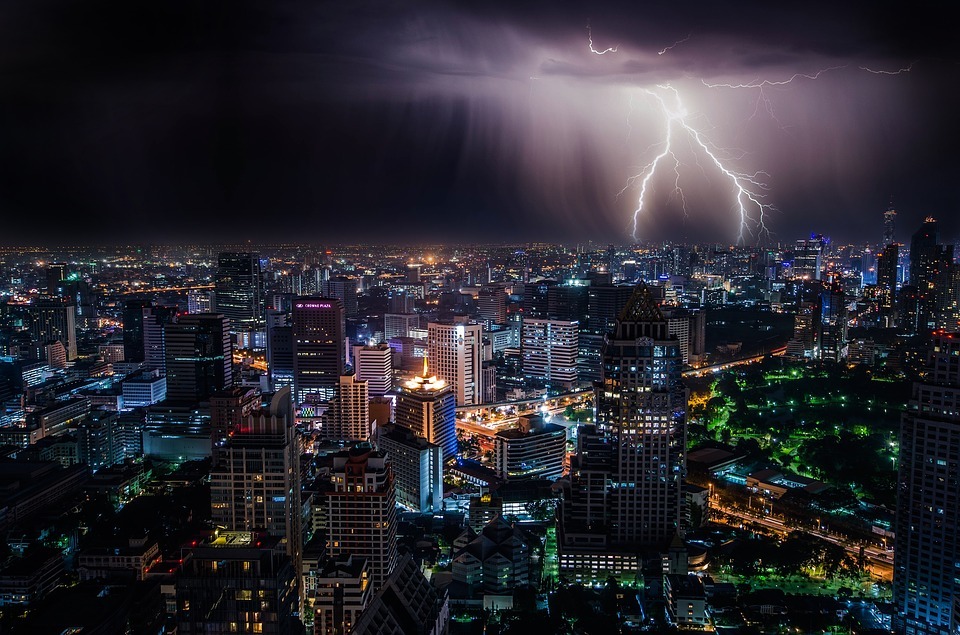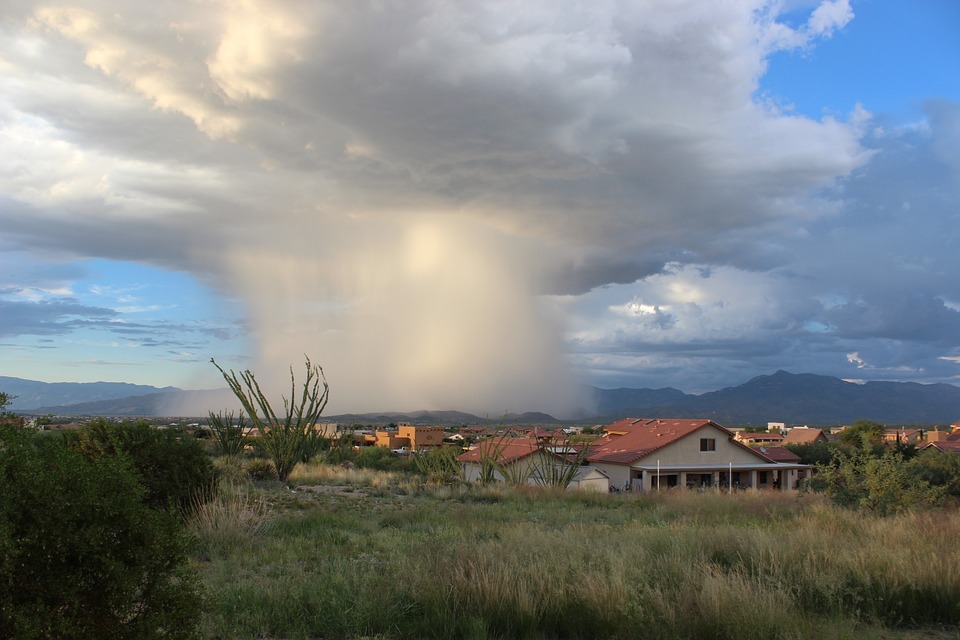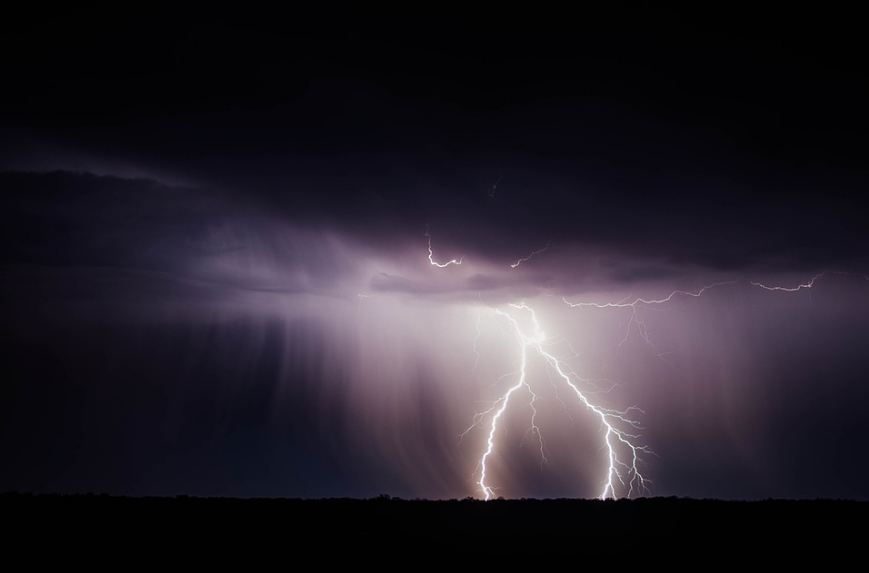The Phenomenon of Ball Lightning: What Do We Know?
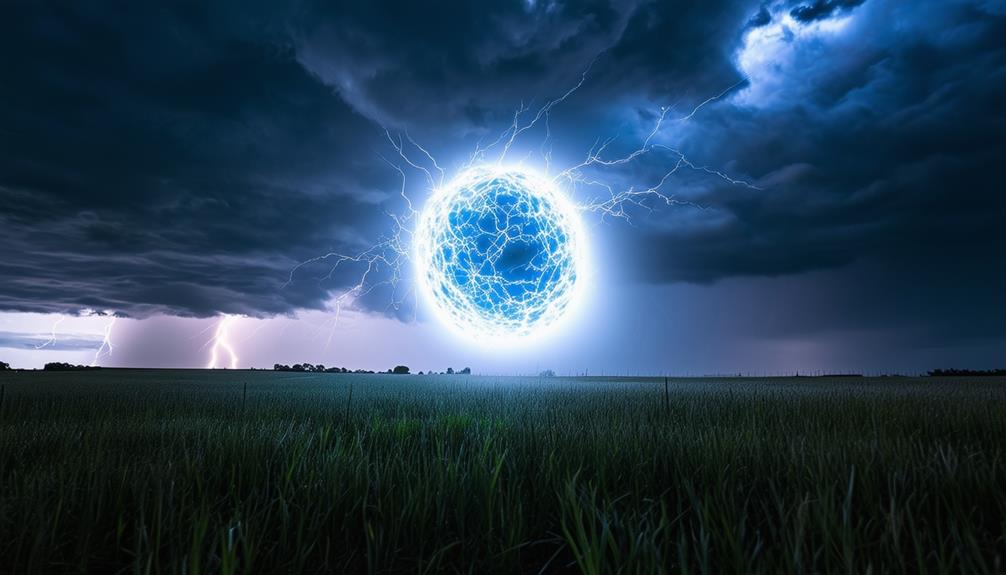
Ball lightning is one of the most puzzling natural phenomena, intriguing scientists and the general public for centuries. Despite numerous historical accounts and modern scientific attempts to replicate it, its true nature remains largely unknown.
This mysterious event has woven itself into cultural folklore and scientific debates alike. What makes ball lightning so challenging to understand and replicate? By examining its traits, historical sightings, and the latest research, we can gain a clearer picture of this fascinating atmospheric occurrence.
Ready to delve into the complexities behind this glowing enigma?
Characteristics
Ball lightning manifests as a glowing sphere that can appear in colors such as red, orange, yellow, white, or blue. Typically measuring several centimeters in diameter, it often materializes during thunderstorms and close to the ground. While its eerie beauty can be captivating, its movement is highly erratic, capable of zipping around at approximately 3 meters per second, making its path difficult to predict.
One of the most fascinating aspects of ball lightning is its sudden disappearance. It may vanish silently without leaving a trace, or it can disappear explosively, accompanied by a hissing sound and a sulfurous odor. Generally, ball lightning lasts only a few seconds.
Although it has the potential to cause damage by burning or melting objects in its path, ball lightning is generally considered harmless. Its unpredictable nature and brief lifespan contribute to its elusive allure.
If you ever encounter this luminous sphere, take a moment to appreciate its mysterious beauty—but be sure to keep a safe distance.
Historical Accounts
Ball lightning has been documented for centuries, with the earliest known reference dating back to 1195.
Notable events, such as the Great Thunderstorm at Widecombe-in-the-Moor in 1638 and the fatal accident of scientist Georg Richmann in 1753, underscore its historical significance.
These accounts and others vividly illustrate the enigmatic presence of ball lightning throughout history.
Earliest Documented Sightings
The earliest documented sighting of ball lightning dates back to 1195, recorded by an English monk named Gervase of Canterbury. Known for his meticulous chronicles, Gervase described witnessing a glowing, spherical object during a storm. His account is significant not only because of its historical context but also due to Gervase's reputation for accurate documentation, lending credibility to his description.
Gervase's 1195 record laid the foundation for future observations and studies of ball lightning. Over the centuries, numerous additional sightings have been reported, each contributing to our understanding and curiosity about this enigmatic phenomenon.
This early account underscores the long-standing intrigue and widespread fascination with ball lightning, which continues to captivate both scientists and laypeople alike.
Notable Historical Events
Historical records of ball lightning have fascinated researchers for centuries, with events like the Great Thunderstorm at Widecombe-in-the-Moor in 1638 standing out as particularly remarkable. During that storm, ball lightning reportedly entered a church, causing extensive damage and even fatalities, leaving an indelible mark on historical accounts.
Another intriguing incident is the sloop Catherine and Mary event in 1726, where witnesses described ball lightning dispersing in various ways, adding to its enigma. Similarly, the crew of HMS Montague reported a large example of ball lightning causing significant damage to their ship, underscoring its unpredictable nature.
Ball lightning has also found a place in folklore. Legends like Anchimayen from South America describe luminous beings that could be interpreted as ball lightning, offering a cultural perspective on the phenomenon.
To help create a vivid image, consider these historical events:
- The Great Thunderstorm at Widecombe-in-the-Moor (1638)
- Sloop Catherine and Mary incident (1726)
- HMS Montague crew report
- Legends like Anchimayen
These accounts highlight ball lightning's mysterious and elusive nature, sparking both fear and fascination across generations.
Scientific Studies
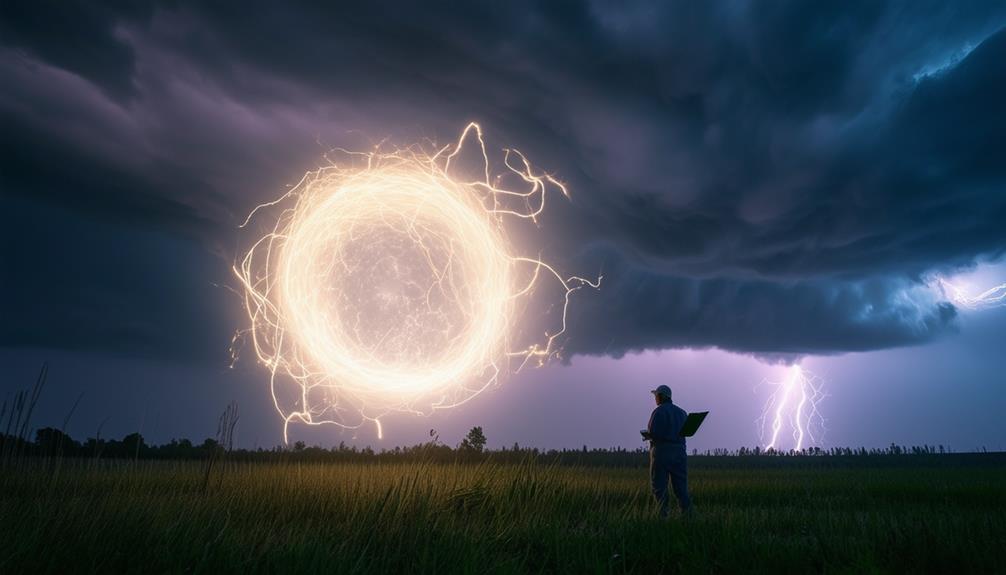
Researchers have explored the phenomenon of ball lightning through various scientific studies, attempting to replicate its effects in laboratory settings. In plasma physics, scientists have conducted experiments to create conditions that mimic ball lightning, contributing to broader lightning research aimed at demystifying this elusive occurrence. By analyzing the optical spectrum of artificially produced ball lightning, researchers have gained insights into its composition and behavior, although the exact correlation between these laboratory results and the natural phenomenon remains uncertain.
Beyond the lab, statistical investigations offer a different perspective. Studies indicate that approximately 5% of the Earth's population has witnessed ball lightning. This data, derived from analyzing over 10,000 reported cases, helps clarify its frequency and characteristics. Despite extensive efforts, the true nature of ball lightning continues to evade complete scientific explanation.
Nevertheless, ongoing research in this field provides valuable knowledge, gradually unraveling the secrets of this fascinating natural event.
Cultural Significance
Now, let's explore how ball lightning has captured the imagination of cultures around the world.
In Japanese folklore, it appears as wandering souls, while in English tales, it's often depicted as mischievous fairies.
The phenomenon is also known in the form of the Min Min lights in the Australian Outback and has influenced various superstitions globally, shaping countless myths and legends.
Historical Legends and Myths
Throughout history, ball lightning has captivated human imagination, featuring prominently in legends from the Japanese hitodama to the Australian Min Min lights. These enigmatic orbs have sparked tales and myths across different cultures, each adding its own mystique to the phenomenon.
In Japanese folklore, hitodama are believed to be the souls of the dead, appearing as floating, luminous spheres. Similarly, the Min Min lights of Australian lore are mysterious glowing orbs that hover above the ground, often attributed to spirits or omens.
In English folklore, ball lightning is often linked to will-o-the-wisps, mischievous fairies leading travelers astray. Prominent figures like Aleister Crowley have described encounters with dazzling globes of electric fire, adding a mystical layer to their already enigmatic reputations.
Historical accounts from the HMS Warren Hastings recount crew members being attacked by giant balls of fire, further solidifying ball lightning's place in the annals of mysterious events.
To visualize these legends:
- Hitodama: ethereal blue flames drifting in the night.
- Min Min lights: glowing orbs dancing on the horizon.
- Will-o-the-wisps: flickering lights leading travelers into the unknown.
- Crowley's electric fire: dazzling, unpredictable spheres.
- HMS Warren Hastings' attack: fiery globes assaulting a ship at sea.
These vivid tales underscore ball lightning's enduring impact on human culture.
Folklore and Superstitions
Legends and myths paint ball lightning in a mystical light, and its cultural significance is deeply rooted in the folklore and superstitions of diverse societies. Across cultures, ball lightning has been linked to various supernatural phenomena.
In English folklore, it's often compared to will-o-the-wisps—ghostly lights said to lead travelers astray. Similarly, in Japan, hitodama are lights believed to be the souls of the deceased.
The Australian Outback has its version, known as Min Min lights, which locals describe with a mix of awe and fear. These lights are often seen as omens or protective spirits. Reports of ball lightning causing harm or being entirely harmless add to its mysterious reputation, making it a subject of both curiosity and dread.
Occurrences near power lines, at high altitudes, or during specific weather conditions have only fueled these myths. Unlike St. Elmo's fire, ball lightning's unique and enigmatic nature sets it apart in historical and cultural accounts.
Its sudden and inexplicable appearances have kept its folklore alive, perpetuating a sense of wonder and supernatural intrigue.
Global Cultural Interpretations
Ball lightning has sparked a myriad of cultural interpretations worldwide, each adding unique layers of meaning to this enigmatic phenomenon. Deeply rooted in folklore and cultural beliefs, these interpretations often attribute supernatural qualities to the glowing orbs.
In Japanese folklore, ball lightning is believed to be the spirits of the deceased, wandering the Earth.
In the Australian Outback, the Min Min lights are similarly mysterious, with tales of these orbs pursuing travelers through the night.
English legends often link ball lightning to supernatural entities like fairies, considered otherworldly beings moving between realms.
Notably, the British occultist Aleister Crowley recounted encountering a dazzling globe of electric fire, suggesting a mystical connection.
Historical accounts from various cultures frequently mention ball lightning, embedding it within the fabric of human experience.
Consider these cultural depictions:
- Wandering spirits in Japan
- Min Min lights in the Australian Outback
- Fairies in English legends
- Aleister Crowley's electric fire globe
- Historical accounts worldwide
These interpretations enrich our understanding of ball lightning, making it not just a scientific curiosity but a significant element of global cultural heritage.
Notable Events
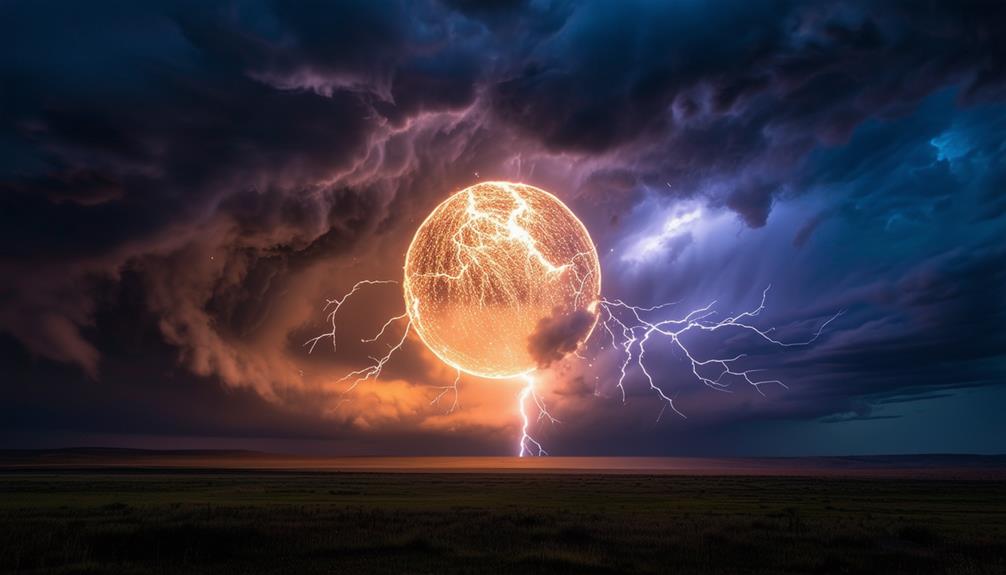
Ball lightning has long perplexed observers and caused significant incidents, such as the Great Thunderstorm at Widecombe-in-the-Moor in 1638. During this event, a church was struck and partially destroyed, with witnesses reporting fiery balls moving erratically inside the building. This incident stands as one of the earliest and most dramatic accounts of ball lightning.
In 1726, the sloop Catherine and Mary experienced a similar phenomenon. Sailors reported a glowing sphere entering the ship, causing panic and minor injuries before dissipating. This encounter added to the growing number of maritime ball lightning sightings, highlighting its unpredictable nature.
Another notable event involved the crew of HMS Montague, who witnessed a large ball lightning display. This incident fueled naval lore and scientific curiosity, capturing the attention of those seeking to understand these mysterious occurrences. Historical accounts like these document ball lightning's ability to cause damage and confusion, leaving observers both fascinated and alarmed.
These significant events underscore the elusive and often hazardous nature of ball lightning, making it a subject of enduring intrigue and scientific investigation throughout history.
Eyewitness Accounts
Eyewitness accounts of ball lightning are both fascinating and perplexing. For centuries, people have described sightings of this unique spherical light and its sudden disappearance.
These reports, along with cultural interpretations, offer valuable insights that enhance our understanding of this elusive phenomenon.
Historical Sightings and Reports
Eyewitness accounts of ball lightning have been documented for centuries, with the earliest recorded sighting by an English monk in 1195. These historical reports have captivated and perplexed individuals through the ages, offering a rich collection of descriptions and narratives.
One of the most notable incidents involved scientist Georg Richmann in 1753, who tragically died while experimenting with ball lightning.
Common features described in these reports include:
- A glowing sphere floating through the air.
- Bright colors such as white, yellow, blue, and red.
- Sudden appearances and disappearances, leaving no trace.
- Various sizes, from small orbs to large, basketball-sized balls.
- Sparks or electrical noise, adding to the enigma.
Despite the lack of scientific understanding at the time, eyewitness accounts from different periods and places remain remarkably consistent. These stories, found in medieval manuscripts and 18th-century journals alike, underscore the recurring, almost otherworldly nature of ball lightning.
Each account adds to our understanding of this phenomenon, highlighting its enduring mystery. With these historical sightings as a foundation, we can appreciate the ongoing intrigue that ball lightning holds over the human imagination.
Descriptions and Characteristics
Many eyewitness accounts describe ball lightning as a glowing, spherical object that moves slowly and unpredictably. These luminous spheres can vary greatly in size, typically ranging from a few centimeters to several meters in diameter. Moving at an average speed of around 3 meters per second, ball lightning allows for detailed observation of its movements and characteristics.
Eyewitnesses often report ball lightning appearing inside houses, airplanes, and even passing through glass windows without causing damage. Despite its glowing appearance, it generally produces minimal heat. Some observers have noted a distinctive smell of ozone or nitrogen oxides accompanying these phenomena, adding to its mysterious nature.
Interestingly, static in transistor radios has been observed during ball lightning events, suggesting possible electromagnetic properties. While most commonly witnessed during thunderstorms, ball lightning can also appear unexpectedly in various weather conditions.
Although typically harmless, especially inside enclosed structures, the unpredictability and rarity of ball lightning make it a fascinating subject of study. These characteristics, compiled from numerous eyewitness accounts, contribute to the ongoing intrigue and scientific curiosity surrounding this enigmatic phenomenon.
Cultural Interpretations
Throughout history, diverse cultures have woven ball lightning into their folklore, attributing it to everything from wandering spirits to playful fairies. These cultural interpretations offer a fascinating glimpse into how different societies perceive unexplained phenomena.
Eyewitness accounts span different cultures and time periods, each embedding ball lightning within their unique legends and supernatural beliefs.
Here's how some cultures have interpreted ball lightning:
- European folklore: Often described as mischievous fairies or 'will-o'-the-wisps,' leading travelers astray.
- Japanese legends: Sometimes linked to the presence of ancestral souls, believed to be visiting the living.
- Native American beliefs: Viewed as spiritual entities or omens, with specific meanings depending on the tribe.
- Maritime traditions: Sailors have recounted seeing glowing orbs on ships, thought to be spirits of lost sailors.
- Russian tales: Often considered to be the spirits of the deceased, warning of impending danger.
These different interpretations highlight the universal intrigue ball lightning sparks. Despite the varied cultural lenses, the consistency in eyewitness reports adds a layer of credibility to this mysterious phenomenon.
Whether viewed as manifestations of souls or playful fairies, ball lightning continues to captivate and mystify across cultures.
Plasma Experiments
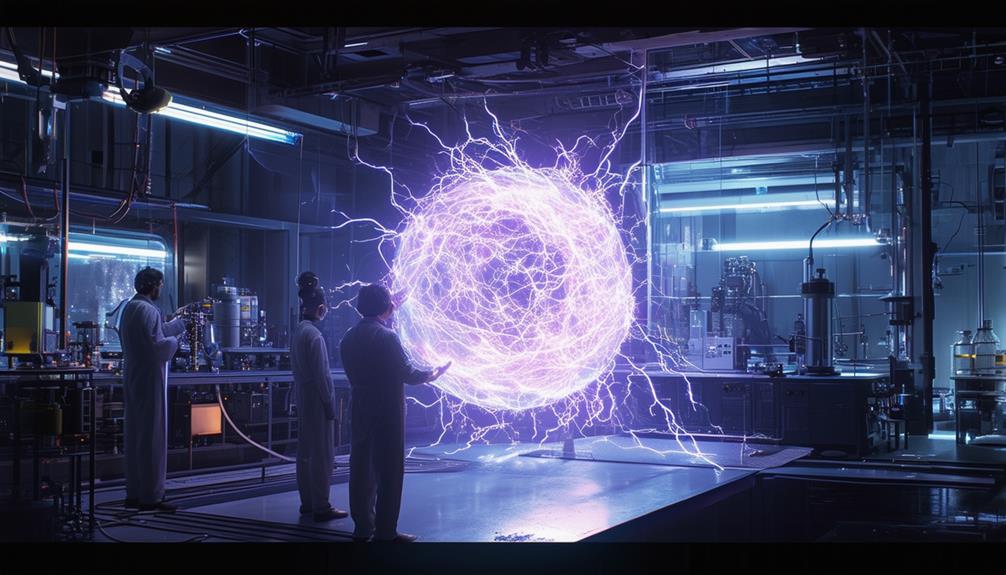
Ursel Fantz's plasma experiments have successfully generated plasma balls that closely resemble the reported characteristics of ball lightning. In these experiments, plasma balls exhibited a vibrant appearance and whirling movements, much like the ball lightning observed in nature. These plasma balls had a brief lifespan, typically lasting only a few seconds. By studying these characteristics, scientists gain valuable insights into the nature of ball lightning.
The vibrant appearance of the plasma balls was particularly intriguing. Through spectroscopic analysis, researchers discovered that the colors were influenced by the type and concentration of salts used in the experiments. Different salts produced various hues, adding another layer of understanding to the visual phenomena associated with ball lightning.
The movements of these plasma balls were also captivating. They often showed ascending and swirling motions, mirroring the erratic behavior of ball lightning reported in anecdotal accounts. This behavior suggests that similar physical mechanisms might be at play in both the laboratory-created plasma balls and natural ball lightning events.
Competing Theories
Scientists have put forward various theories to explain the mysterious phenomenon of ball lightning. One notable theory is Pyotr Kapitsa's standing wave theory, which suggests that ball lightning forms due to standing waves of electromagnetic energy. This idea posits that specific atmospheric conditions create these standing waves, leading to the formation of the visible ball of light.
Other theories include:
- Microwave Radiation: Some researchers propose that microwave radiation generated during thunderstorms ionizes the air, forming glowing balls.
- Nanobatteries: This hypothesis involves tiny particles that store and release energy, possibly explaining the sustained appearance of ball lightning.
- Chemical Reactions: Certain theories suggest that atmospheric chemical reactions produce the intense light and heat observed.
- Plasma: Some scientists argue ball lightning is a form of plasma, a highly ionized state of matter.
Despite these theories, there's no consensus on the precise cause or energy source of ball lightning. Each theory has its strengths and weaknesses, contributing to ongoing scientific debate. With limited concrete evidence, understanding ball lightning remains a captivating challenge.
Research Challenges
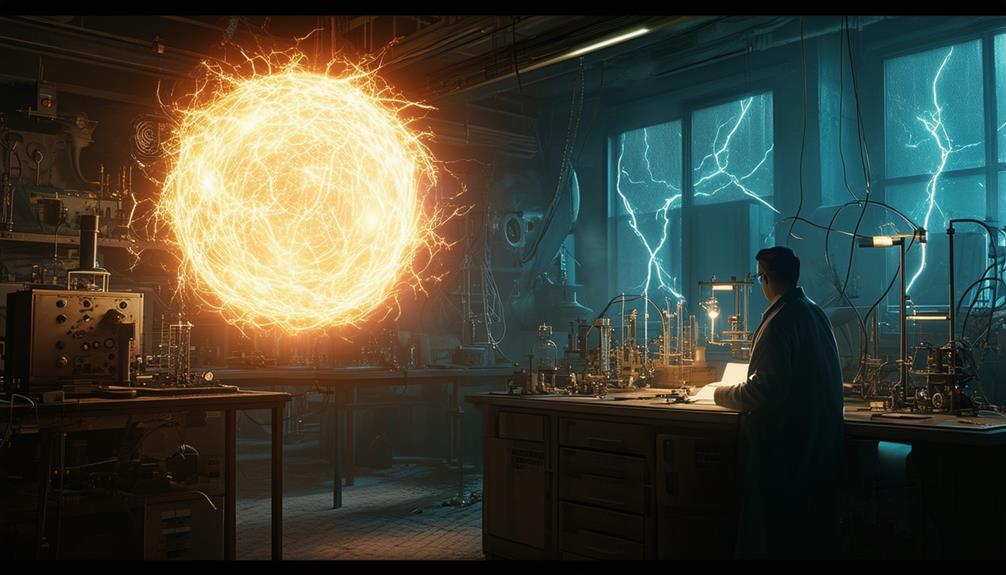
Studying ball lightning is fraught with significant research challenges, complicating our understanding of this elusive phenomenon. One primary obstacle is the difficulty in replicating authentic ball lightning in laboratory conditions. Despite numerous attempts, success rates remain low, limiting the availability of concrete data.
Furthermore, there's no consensus on its exact formation process or energy source, hindering the development of a unified theory to explain its origin and sustainability.
Another challenge is analyzing its movement patterns. With approximately 5% of Earth's population reporting sightings and over 10,000 documented cases, the behaviors of ball lightning are highly inconsistent. These variances make it difficult to establish standard characteristics or predict its behavior.
Additionally, the relationship between laboratory-generated results and real-world observations is unclear. Controlled experiments often fail to replicate the phenomena observed in nature.
These challenges underscore the complexity of studying ball lightning. Overcoming these hurdles is essential for advancing our understanding. The path forward requires innovative approaches and persistent efforts to bridge the gap between theory and observation.
Conclusion
You've explored the intriguing phenomenon of ball lightning, examining its characteristics, historical accounts, and cultural significance.
Despite extensive scientific studies and plasma experiments, its true nature remains elusive. Competing theories and the challenges of replication make understanding it difficult, but future investigations hold promise.
With innovative experiments and advanced technology, we're on the cusp of uncovering the mysteries of ball lightning.
Continue advancing the boundaries of knowledge!


